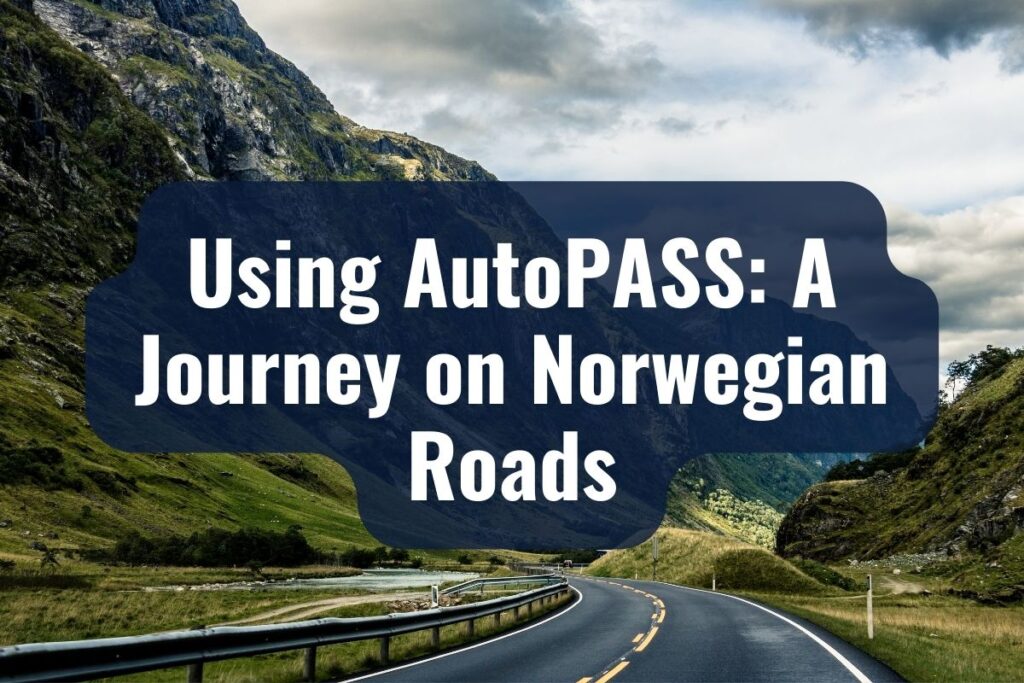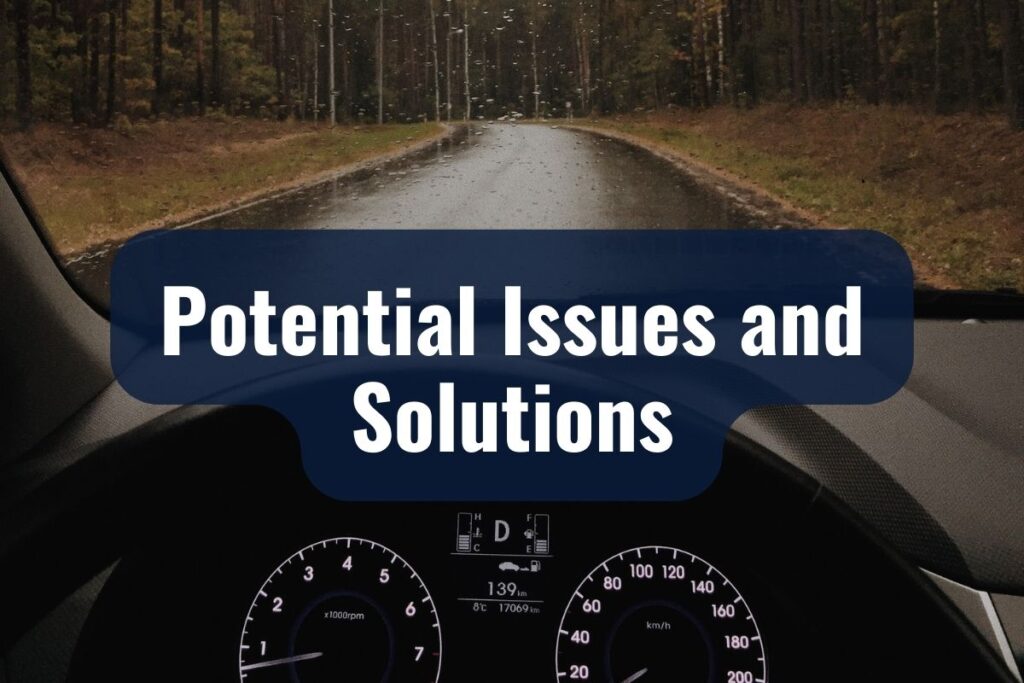Norway, a country renowned for its breathtaking fjords and vibrant cities, also boasts a highly efficient transportation infrastructure. Central to this efficiency is the AutoPASS system. As you embark on journeys through Norway’s scenic routes, understanding AutoPASS can turn your travels from potentially confusing to seamlessly smooth.
This guide delves into the essence of AutoPASS, ensuring that both locals and newcomers can navigate Norway’s roads with ease and confidence.
Key Takeaways
- AutoPASS is Norway’s automated toll collection system, making road travel hassle-free.
- AutoPASS tags, affixed to vehicles, allow seamless toll payments without stops.
- Foreigners can easily set up an AutoPASS account online, linking their payment methods.
- AutoPASS users are generally billed monthly, with charges automatically deducted if a card is linked.
- Promptly address any issues, like unread tags or billing discrepancies, with your service provider.
- Rental cars typically handle AutoPASS tolls through the rental company’s system.
Understanding AutoPASS: A Glimpse into Norway’s Toll System
What is AutoPASS?
AutoPASS is the epitome of Norway’s commitment to modern and efficient transportation. Essentially, it is an electronic toll collection system designed to streamline paying for road usage.
Gone are the days of stopping, searching for cash, or waiting in long queues to pay for tolls. With AutoPASS, everything is automated, allowing for a smoother and faster driving experience.
Why was it Introduced?
Norway, with its diverse landscapes, requires a robust infrastructure to connect its various regions. Roads crisscrossing the country need continuous maintenance, upgrades, and sometimes even the construction of new routes.
AutoPASS was introduced as a solution to fund these necessary developments. The revenues generated from the tolls directly finance road projects and improvements.
Moreover, by transitioning to an electronic system, traffic flow has become more seamless, reducing congestion and decreasing the environmental impact of idling vehicles.
The Role of AutoPASS in Norway’s Road Infrastructure
Beyond just being a tool for collecting tolls, AutoPASS has played a pivotal role in shaping the Norwegian road infrastructure. Providing a steady stream of funding ensures that roads are not only well-maintained but also constantly evolving to meet the needs of the growing population and the influx of tourists.
It supports projects like tunnel construction, bridge repairs, and the expansion of highways, all aiming to make traveling in Norway a pleasure rather than a chore. The system also indirectly promotes eco-friendly driving; many electric vehicles receive discounts or even exemptions, further solidifying Norway’s stance on sustainable living and driving.
The Mechanics of AutoPASS

Venturing onto Norwegian roads, you might wonder: How does this automated toll system detect vehicles and process payments without causing delays? Here, we demystify the inner workings of AutoPASS, shedding light on its technical aspects while keeping it comprehensible for everyone.
How the System Detects Vehicles
As you drive, overhead gantries equipped with sensors and cameras span certain roads. These installations are part and parcel of the AutoPASS infrastructure. When a vehicle, equipped with an AutoPASS tag, approaches, these sensors spring into action.
The tag, a small electronic device affixed to the vehicle’s windshield, communicates with the sensors using Radio Frequency Identification (RFID) technology. As the vehicle passes under the gantry, the system swiftly identifies the tag, records the passage, and continues monitoring the next vehicles, all in a matter of milliseconds. This rapid identification ensures that traffic flow remains uninterrupted, regardless of the volume of vehicles on the road.
How Toll Fees are Determined
One of the marvels of the AutoPASS system is its ability to differentiate between various vehicle types and levy toll charges accordingly. Factors that influence the toll fee include the vehicle’s weight, size, and emissions.
For instance, a heavy-duty truck would be charged differently than a compact passenger car. Moreover, electric and hybrid vehicles often enjoy discounted rates, reflecting Norway’s commitment to promoting sustainable and eco-friendly transportation.
Additionally, toll rates can vary based on the time of day, specific regions, and the infrastructure projects they support. Some toll points might have peak and off-peak rates, designed to distribute traffic more evenly throughout the day and encourage driving during less congested times.
Setting Up AutoPASS for Foreigners

Navigating the roads of a new country can be daunting, and when toll systems come into play, it might seem even more complex. However, with Norway’s AutoPASS, the process is straightforward and user-friendly. Here’s a step-by-step guide tailored for foreigners, ensuring you can set up and use AutoPASS with ease.
The Importance of Having an AutoPASS Tag
While it’s possible to use many of Norway’s roads without an AutoPASS tag, having one significantly simplifies the toll experience. With a tag:
- Automatic Payments: No need to manually pay each time or receive invoices.
- Streamlined Travels: Experience uninterrupted drives without stopping at toll booths.
- Access to Discounts: Certain toll stations offer reduced rates for vehicles with registered AutoPASS tags.
Steps to Obtain an AutoPASS Tag as a Foreigner
- Locate an AutoPASS Service Provider: These official service points are dotted across Norway. You can visit one, or some providers might even offer online registration.
- Provide Necessary Documentation: Typically, you’d need to present vehicle registration documents and identification. Some providers may also require proof of residence, even if temporary.
- Receive and Install the Tag: Once registered, you’ll receive the AutoPASS tag. It comes with instructions on how to affix it to your windshield properly.
Linking Your Tag with a Payment Method
After securing the tag, the next step is ensuring seamless payments:
Online Registration: Navigate to the official AutoPASS portal and create an account using the details associated with your tag.
Link a Payment Method: Most foreigners opt for credit or debit card linkage. Ensure your card is valid for the duration of your stay in Norway. Once linked, toll fees will be automatically deducted, and you’ll receive monthly statements detailing your travels and charges.
Using AutoPASS: A Journey on Norwegian Roads

Embarking on a journey through Norway’s picturesque landscapes is a delightful experience, and AutoPASS is designed to be as seamless as possible. But how does one navigate the myriad of toll points and ensure their AutoPASS tag is functioning correctly? Here’s a detailed guide to aid you in your Norwegian adventures.
What to Expect When Driving on Toll Roads
As you traverse the intricate web of Norwegian roads, not all paths will have toll charges. However, on the ones that do:
Overhead Structures
Look out for overhead gantries that house the AutoPASS sensors. These are clear indicators of toll points.
No Stops Required
The beauty of AutoPASS lies in its non-intrusive nature. Your vehicle doesn’t need to slow down significantly or stop at these points. Drive normally, and the system will do the rest.
Indicator Signals
Some toll points may have lights or signals that flash briefly as you pass underneath, indicating a successful reading of your tag.
Visual Indicators of AutoPASS Toll Points
To help drivers identify upcoming toll points:
- Signage: Before approaching a toll point, there will be clear road signs indicating its presence. This gives drivers ample time to prepare, though with AutoPASS, no specific action is required from the driver.
- Distinctive Gantries: The overhead gantries are usually quite distinctive and easy to spot, often with the AutoPASS logo prominently displayed.
Ensuring Your Tag Works Correctly
For the most part, AutoPASS tags are reliable and require little maintenance. However, to ensure consistent functionality:
- Proper Placement: Ensure the tag is affixed to the windshield as instructed during installation. It should be unobstructed and facing outwards.
- Keep it Clean: A dirt-covered tag may not function correctly. Regularly clean your windshield and tag it with a soft cloth.
- Monitor Your Account: Occasionally check your AutoPASS account to ensure tolls are being registered and payments are processed correctly. Discrepancies, though rare, can occur, and it’s wise to be proactive.
Billing and Payments
Ensuring you’re on top of your AutoPASS payments is integral to a stress-free driving experience in Norway. But how does the billing process work, especially for foreigners unfamiliar with the system?
Understanding the Billing Cycle
AutoPASS operates on a fairly predictable billing cycle.
For most drivers, especially those with linked payment methods, you will receive a monthly invoice detailing all your toll passages and the corresponding charges.
If you’ve linked a credit or debit card, charges are automatically deducted, and you’ll get a notification or statement for your records.
Addressing Invoices
Many AutoPASS providers offer e-invoicing, where you’ll receive your invoice directly to your registered email address. It’s not only eco-friendly but also convenient for those who prefer digital records.
If you haven’t opted for e-invoicing or if your provider does not offer it, expect to receive a physical invoice by mail to your registered address.
Paying Manually
For those who haven’t linked an automatic payment method:
Review the Invoice: Whether it’s electronic or physical, thoroughly check your invoice for the total amount and due date.
Use the Provided Payment Details: The invoice will contain payment instructions, often including bank account details or other methods available for direct payment.
Ensure Timely Payments: It’s crucial to pay by the due date mentioned in the invoice to avoid any additional fees or complications.
Addressing Payment Discrepancies
Mistakes, although rare, can happen. If you believe there’s an error in your bill:
Contact the Service Provider: Reach out to your AutoPASS service provider with your concerns. Having your invoice and any relevant details on hand will help streamline the process.
Keep Records: Always keep records of your journeys and payments. These can be useful if discrepancies arise.
Clarify Policies: Sometimes, what seems like a discrepancy might be due to certain policies, like peak pricing or specific charges for certain roads. It’s always a good idea to clarify with your provider.
Potential Issues and Solutions

Even with the best systems, occasional glitches or misunderstandings can occur. It’s natural, especially for foreigners adapting to a new tolling system.
Fortunately, Norway’s AutoPASS is backed by an efficient support structure. Here, we delve into some potential issues you might face and the steps to address them, ensuring your driving experience remains smooth.
| Potential Issue | Immediate Solution |
| Unread AutoPASS Tag | Check placement, clean the tag, or contact provider. |
| Incorrect Charges | Cross-reference travel records and contact the provider. |
| Lost/Damaged Tag | Report to provider for deactivation and replacement. |
| Payment Failures | Update payment methods and address outstanding charges. |
| Language Barriers | Use the English version of the AutoPASS site or seek local help. |
1. Unread AutoPASS Tag
You’ve noticed, either through visual indicators at toll points or by monitoring your account, that your AutoPASS tag isn’t being consistently read.
- Check the tag’s placement. Ensure it’s adhered correctly to the windshield, facing outward and unobstructed.
- Clean the tag and the area of the windshield where it’s placed. Dirt or debris might be causing interference.
- If the problem persists, contact your AutoPASS service provider. The tag might be faulty and require replacement.
2. Incorrect Charges
Upon reviewing your invoice, you believe you’ve been charged incorrectly, either too much or for roads you haven’t traveled.
- First, cross-reference the charges with your travel records, if available.
- Contact your AutoPASS service provider, presenting your concerns and any evidence that supports your claim.
- Understand the toll policies. Sometimes, what appears as an error might be a charge during peak times or from specific high-cost roads.
3. Lost or Damaged Tag
Your AutoPASS tag is either lost or has suffered significant damage, rendering it non-functional.
- Report the loss or damage immediately to your service provider. They’ll provide guidance on deactivating the lost tag and obtaining a replacement.
- While awaiting a new tag, be aware that you might receive invoices for toll passages, which you’ll need to address manually.
4. Payment Failures
Your linked payment method failed, either due to expired card details, insufficient funds, or other banking issues.
- Update your payment method. Log into your AutoPASS account and ensure the linked card or bank account is valid and has the necessary funds.
- Address any outstanding charges immediately to avoid additional fees or complications.
- Stay proactive. Regularly check your bank or card statements to ensure there are no issues with AutoPASS deductions.
5. Language Barriers
While the system is designed to be user-friendly, language barriers can sometimes make navigation challenging.
- Utilize the English version of the AutoPASS website or contact centers for guidance.
- For in-depth concerns, consider seeking help from local friends, colleagues, or community groups familiar with the system.
Frequently Asked Questions
While not strictly necessary for short-term visitors, having an AutoPASS tag simplifies the toll experience. Without one, you’d receive manual invoices for toll charges, which might be less convenient than the automatic deductions the tag offers.
No, toll rates can vary based on the type of road, the region, the vehicle type, and even the time of day. Specific projects, like tunnels or bridges, might have different charges than regular roadways.
You can log into your account on the official AutoPASS portal and navigate to the section allowing you to update personal or vehicle details. Ensure that your information is current to avoid potential issues.
If you sell your vehicle, it’s crucial to deactivate the linked AutoPASS tag from that vehicle and inform your service provider. For a new vehicle, you can obtain a new tag or, in some cases, transfer your existing tag, ensuring it’s linked correctly to the new vehicle’s details.
Rental cars often come with their own AutoPASS tags, and toll charges are typically handled by the rental company. It’s best to check with the company when renting to understand their specific toll payment procedures.
If you suspect a billing error, first check your payment records. If you find a discrepancy, contact your AutoPASS service provider with your concerns and payment proof. They’ll guide you on the next steps.
No, each AutoPASS tag is registered to a specific vehicle. If you have multiple vehicles, each one requires its tag.
Contact your AutoPASS service provider and inform them of your decision. They’ll guide you through the deactivation process, ensuring any outstanding charges are settled.


